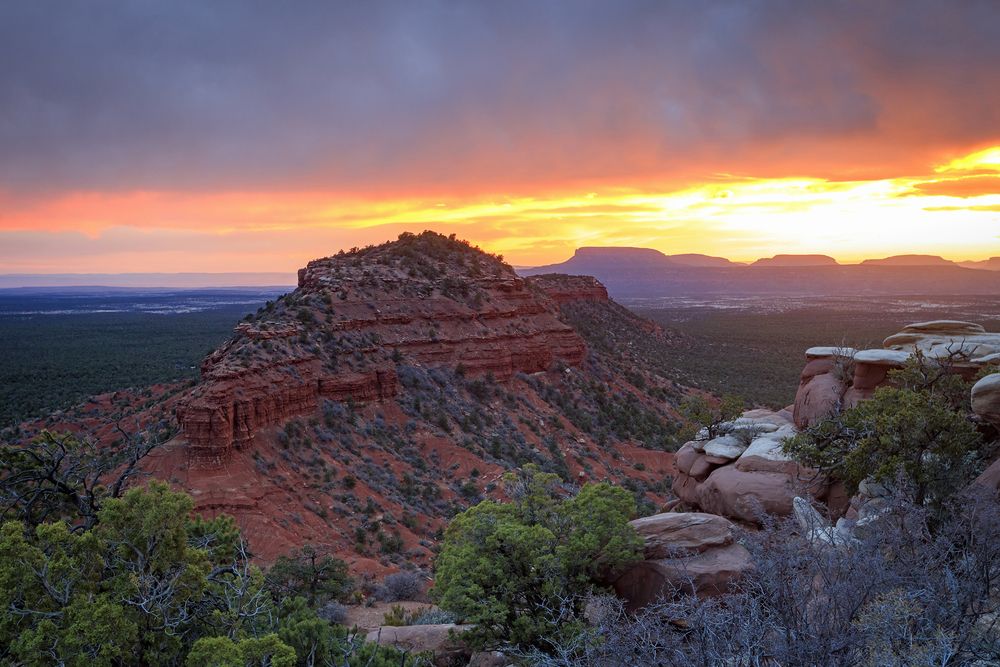Bears Ears National Monument in southeastern Utah was designated by President Barack Obama in December 2016 and is managed by the U.S. Forest Service and Bureau of Land Management (BLM). It is considered one of the most significant cultural areas in the United States as it has been home to indigenous peoples for thousands of years.

Location
Nestled in the southeastern corner of Utah, Bears Ears National Monument is a place where the high desert meets stunning plateaus, deep canyons, and soaring rock formations. The monument is named after two distinctive buttes that rise prominently from the landscape, resembling a pair of bear’s ears. It spans over 1.3 million acres and is accessible from nearby towns such as Bluff, Blanding, and Monticello.
Designation as a National Monument
Bears Ears National Monument was officially designated on December 28, 2016, by President Barack Obama. The designation was a culmination of years of advocacy by Native American tribes, conservation groups, and outdoor enthusiasts who recognized the area’s cultural, historical, and ecological significance.
Why Bears Ears is Protected
The primary reason for protecting Bears Ears is its rich cultural heritage. The monument is home to more than 100,000 archaeological sites, including ancient cliff dwellings, rock art, and ceremonial sites. These remnants offer invaluable insights into the lives of the Ancestral Puebloans and other indigenous cultures who have inhabited the region for thousands of years.
Additionally, Bears Ears is a vital natural habitat, supporting diverse flora and fauna. The rugged terrain, unique geology, and relatively undisturbed environment make it a haven for outdoor enthusiasts and researchers alike. The protection of this area ensures the preservation of its natural beauty, cultural treasures, and ecological integrity for future generations.
Things to Do for Visitors
Bears Ears National Monument offers a wealth of activities for adventurers and history buffs:
- Hiking and Exploring: There are numerous trails and off-the-beaten-path routes that lead to spectacular viewpoints, hidden canyons, and archaeological sites. Popular hikes include the Butler Wash, Mule Canyon, and the stunning House on Fire ruins.
- Rock Climbing: The sandstone cliffs and rock formations provide thrilling challenges for rock climbers of all levels.
- Camping: Primitive camping is available in many parts of the monument. For a more developed experience, there are campgrounds in the surrounding area.
- Photography: The breathtaking landscapes, dramatic rock formations, and ancient ruins offer endless opportunities for photographers to capture the beauty of the monument.
- Cultural Tours: Several local organizations and tribes offer guided tours that delve into the area’s cultural and historical significance. These tours provide a deeper understanding of the connection between the land and the Native American tribes.
- Wildlife Viewing: Keep an eye out for the diverse wildlife that calls Bears Ears home, including mule deer, bighorn sheep, golden eagles, and various reptiles and amphibians.
Visiting Bears Ears National Monument is not just about exploring a stunning natural landscape; it’s about connecting with a place that holds deep cultural and historical meaning. Whether you’re hiking, camping, or simply soaking in the views, Bears Ears offers an unforgettable experience.
Agate Fossil Beds
Aztec Ruins
Bandelier
Bears Ears
Cabrillo
Canyon de Chelly
Cedar Breaks
Colorado
Devils Postpile
Devils Tower
Dinosaur
Effigy Mounds
El Malpais
Florissant Fossil Beds
Fort McHenry
Fort Moultrie
Fort Pulaski
Fort Stanwix
Fort Sumter
George Washington Birthplace
Gila Cliff Dwellings
Grand Staircase-Escalante
Hovenweep
Lava Beds
Little Bighorn Battlefield
Misty Fjords
Montezuma Castle
Muir Woods
Natural Bridges
Ocmulgee
Organ Pipe Cactus
Pipestone
Pompeys Pillar
Rainbow Bridge
–
Russell Cave
Salinas Pueblo Missions
Scotts Bluff
Statue of Liberty
–
Sunset Crater Volcano
Tuzigoot
Vermilion Cliffs
White Sands
World War II Valor in the Pacific
Wupatki
